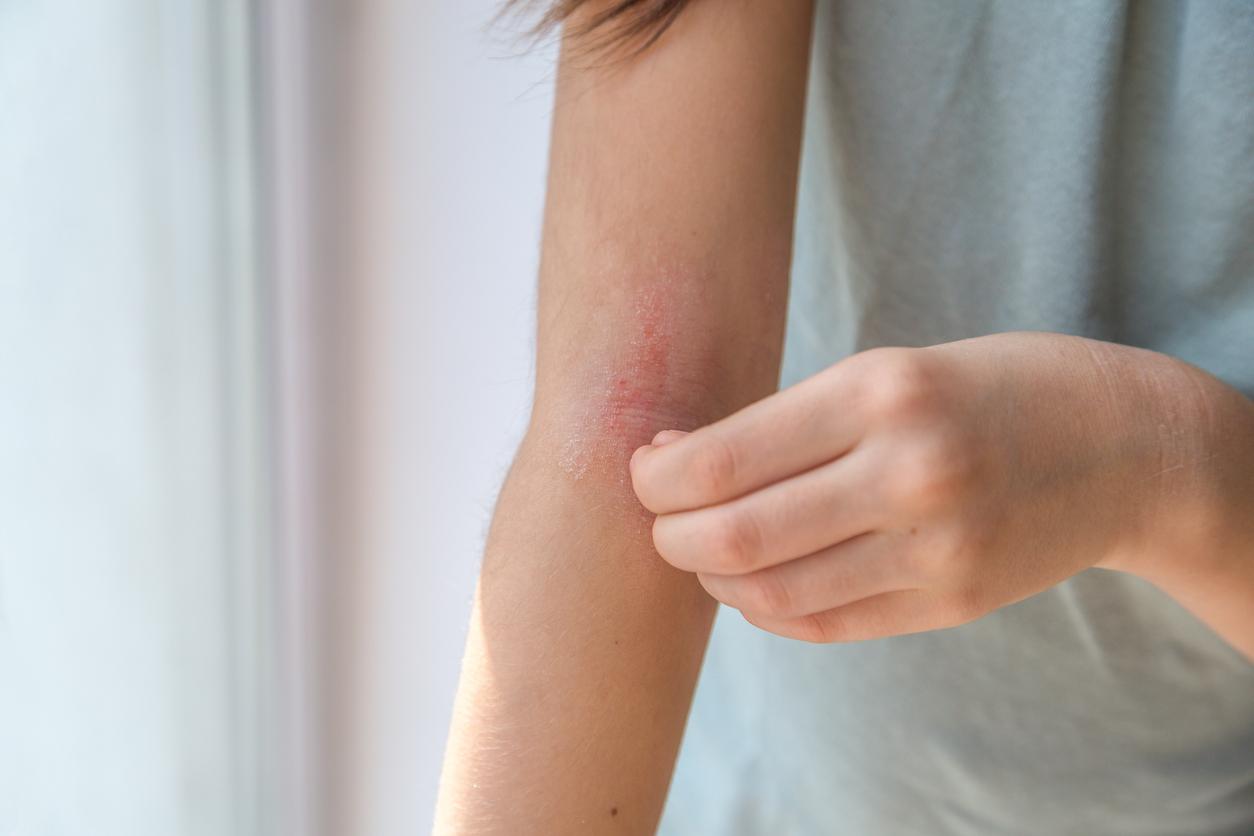It was while often using his iPad that a young American discovered his nickel allergy. A rather common condition since 5 to 10% of the population is affected.

Allergic to his iPad. This surprising case of a child who developed generalized eczema after using a touch pad is detailed in Pediatrics, this July 14. An 11-year-old boy, allergic to nickel, had a strong allergic reaction to repeated use of a tool that contained it.
A common allergy
This young American suffered from various skin problems. The one for which he was treated at the San Diego clinic (California, United States) has a very common cause: an allergy to nickel, which would affect 5 to 10% of the population. The origin of his allergy is more original: the shell of his iPad would contain nickel, according to the doctors who followed him.
According to the latest US data, 25% of children are allergic to nickel. If there are so many of them, it is because this metal migrates very easily: with perspiration, ions are released. In contact with these, most often, an eczema is triggered. Nickel allergy cannot be cured. Contact eczema can be treated with steroids, emollient creams to relieve itching, or antibiotics if the wounds become infected. Only one solution is needed to avoid these inconveniences: avoid any contact with the metal. In the case of this young American, doctors advised to add a protective shell to the touch pad.
A test to detect nickel
Contacted by Associated Press, the spokesperson for Apple – which markets the iPad – denied the presence of nickel in its products. But metal is everywhere: euro coins contain it, as do some dental products or medical accessories. Not to mention the many inexpensive jewelry where nickel serves as a hardener, its uses in clothing (staples, jeans buttons, zippers or bra …).
Under these conditions, it is difficult to avoid contact with nickel. A test, which uses dimethylglycoxime, makes it possible to demonstrate the presence of the metal. Just soak a cotton swab with dimethyl glycoxime solution and rub it against the object that may contain nickel. If the cotton turns pinkish-purple, it contains some. Depending on the objects in question, it is advisable either to replace them with plastic substitutes, or to cover them with plastic film.
.

















